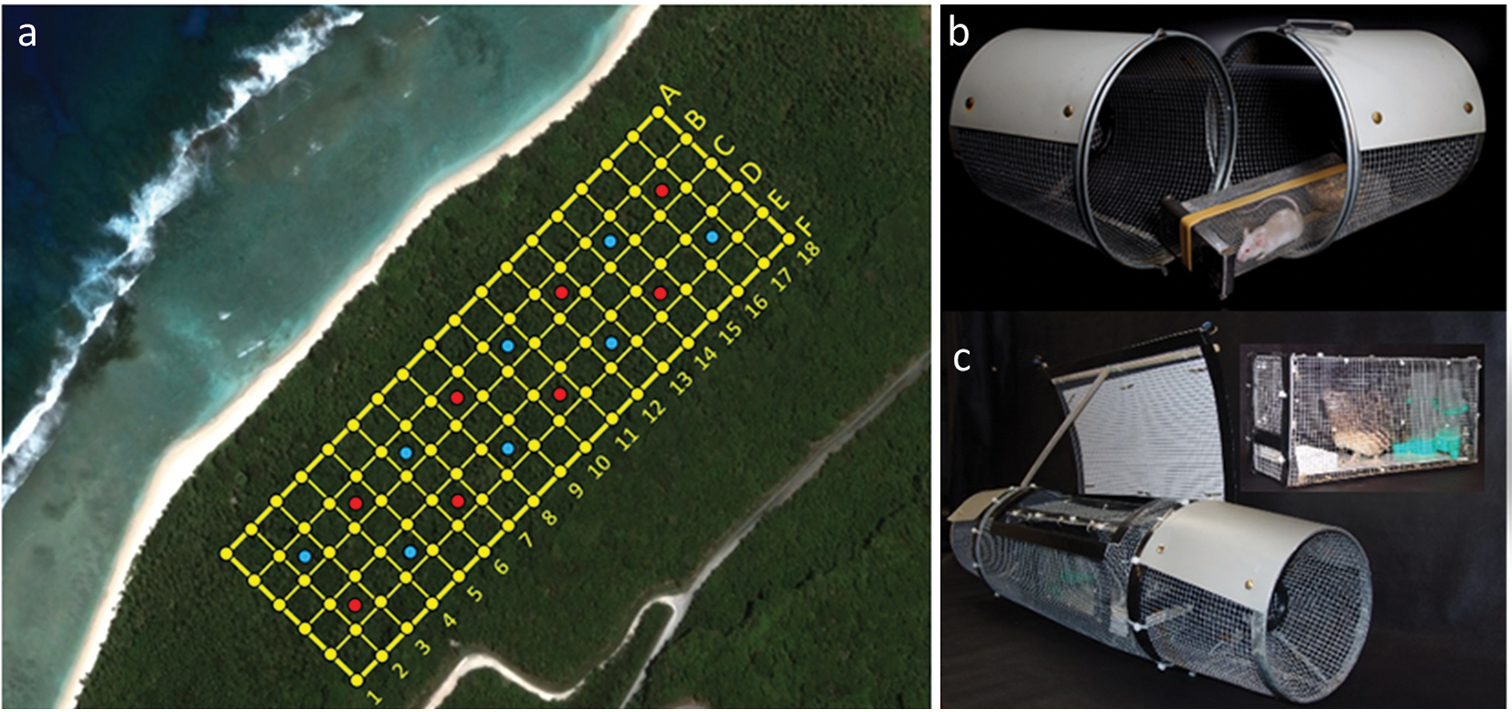
|
||
|
The 7.65 ha grid consisted of 124 traps (a). Yellow dots represent mouse-lure traps (n = 108 traps) whereas red and blue dots represent bird-lure Japanese quail (Coturnix japonica) traps (n = 16) with and without cameras, respectively. Mouse-lure traps (b) were spaced every 30 meters and were stationary. Bird-lure traps (c) were spaced at 60 meters and were moved weekly to a new location. For instance, bird-lure traps in week 1 (configuration as shown in a) would move in week 2 from the alpha transect lines of BC and DE to AB and CD, respectively. New locations would remain in the same numeric transect lines of 2–3, 4–5, 6–7, 8–9, 10–11, 12–13, 14–15, and 16–17 (until all interior spaces had been sampled) before shifting in week 6 to numeric lines of 3–4, 5–6, 7–8, 9–10, 11–12, 13–14, 15–16, and 17–18. Each bird-lure trap location was sampled two times for a total of two weeks. The snake barrier fence runs along curved road line (bottom right of panel a). Photo credit for 1b: Shane R. Siers. |